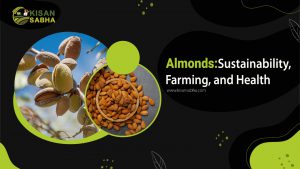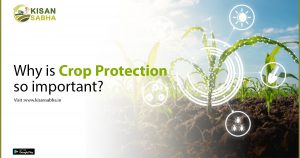Under PM-KISAN, the government provides income support of Rs 6000 a year to farmers with a valid enrolment, paid in three equal cash transfers of Rs 2000 — one every four months.

The Modi government’s cash-for-farmers program has been able to benefit only half of the 140 million farmers targeted in 2019-20 due to implementation hurdles, according to figures presented in Parliament. The next disbursal, now due, is likely to leave out those who have not been able to link their bank accounts with Aadhaar, the universal 12-digit biometric identity number.
Under PM-KISAN, the government provides income support of Rs 6000 a year to farmers with a valid enrolment, paid in three equal cash transfers of Rs 2000 — one every four months. It was launched on 24 February 2019, when the first installment was paid.
At the current rate of expansion, the government is unlikely to spend the entire Rs 75,000 crore budgeted for 2019-20. As of October 21, 2019, the government has spent Rs 32,577 crore, or 43% of this.
Aadhaar-based enrolment and cash transfers, slow internet connections in many rural centers, and messy land records have slowed the program, the farm ministry told a parliamentary panel this month.
Cash transfers under the program take place every four months: December to March, April to July, and August to November. In the first installment period (December 2018 to March 2019), nearly 70.2 million farmers received a total of Rs 14,055 crore. In the second tranche (April to July 2019), only Rs 59.2 million were paid a total amount of Rs 11,845 crore. The third installment saw 33.3 million farmers benefiting, with a payout of Rs 6,677 crore.
There’s a reason those numbers look out of place. After all, if 70.2 million farmers received the first installment, why did only 59.2 receive a second installment and only 33.3 million a third? The agriculture ministry counts the first tranche paid to a farmer, even if it was paid for the second period due to late enrolment, as the ‘first installment paid’. This means even if a farmer enrolled in the second period (April to July 2019) and got his installment for this period as his first-ever cash transfer, he will be counted among those receiving the first installment (December 2018 to March 2019). This inflates the total number of farmers, as shown above.
In all, of the targeted 140 million farmers, nearly 71 million farmers have so far received the payouts, as the ministry noted before the parliamentary panel. “I would like to make it clear that the total number of farmers who have got the benefit is right now 7,17,42,959,” a ministry official said in the report to Parliament.
That leaves another 69 million to be targeted by March.
Based on these, 33.3 million farmers benefited from the scheme between December 2018 and March 2019 (they have received three installments), with an additional 25.9 million benefited from it between April and July (they have received two), and an additional 11 between August and November (they have received only one).
According to the scheme’s design, farmers registered for the scheme in the first stage would have received all three installments released so far since the start of the scheme. Farmers who registered during the second period would not have received the first installment but would have received the next two because the benefits are not retrospective.
The agriculture ministry cited in its report to the committee multiple hurdles in the program, rolled out to squash large-scale protests by farmers in the run-up to the last general election in May 2019. India has continued to remain in the grip of an agrarian crisis caused by low food prices and extreme weather events.
Problems in Aadhaar authentication, or the process of validating the biometric identity with a beneficiary’s bank account, have limited the number of potential payouts, according to the report.
Aadhaar linking was optional for the first tranche that covered the December 2018-March 2019 period. For the second installment covering the period April-July 2019, Aadhaar authentication was compulsory, except for north-eastern states and the erstwhile Jammu and Kashmir.
As teething problems began showing, the government relaxed the requirement of Aadhaar till November 30, 2019. But all farmers need to mandatorily complete their Aadhaar details after this date to get cash transfers. Payouts for the currently due tranche for the December 2019-March 2020 period will be done based on Aadhaar validation. The government has made Aadhaar compulsory for all welfare handouts to plug leakages.
“Demographic authentication of Aadhaar data is slowing down the release process as there are a lot of cases where the names entered in the database of PM-KISAN do not match with the names as available in their Aadhaar,” the ministry said in the report.
In Bihar, Jharkhand, and Uttar Pradesh, the lack of proper land records “poses a difficulty in identifying the actual beneficiaries”, the ministry said. Eligible farmer families are identified on the basis of operational land holding data according to the Agricultural Census Data 2015-16, which is then extrapolated to 2018-19, an official said. It’s the job of state governments to provide accurate beneficiary data and payments are continuously updated.
Payments are made through centralized financial software, which rejects beneficiaries in case of an Aadhaar or land record mismatch. Poor internet connections also hamper the uploading of data to the PM-KISAN database, the ministry said. The software validates a payment only when there’s an accurate match of three data points: Aadhaar, land record, and bank account.
The ministry added that in states such as Punjab, land has been transferred but records are not available. The country has 140 million operational land holdings, which refers to the number of land parcels owned by total households.
“The government needs to redesign the scheme. Commonly, land records are in the name of the head of the family, while the land is cultivated by his sons. So, who should get the money has become a matter of family disputes,” said Yudhvir Singh, the national general secretary of the Bharatiya Kisan Union.
According to Singh, farmers are finding it difficult to correct even small details, such as mismatches in the spelling of names. Experts such as Ashok Gulati of the think-tank ICRIER say a sufficient amount of national income support to cover farming costs can help cut down wasteful subsidies.
According to calculations by Gulati, published in an April 2018 paper, a national-level income transfer scheme to all farmers will cost “Rs 1.97 lakh crore under the assumption that all farmers get Rs 10,000/ha irrespective of what crops they are growing and whom they are selling”. This is only slightly more than the Rs 170 lakh crore that the country spends on its food subsidy bill.
Source: Hindustan Times
Link:https://www.hindustantimes.com/india-news/pm-kisan-misses-half-of-target-due-to-implementation-hurdles/story-oePlUPAUgqZJ1BHN6EBUMK.html




